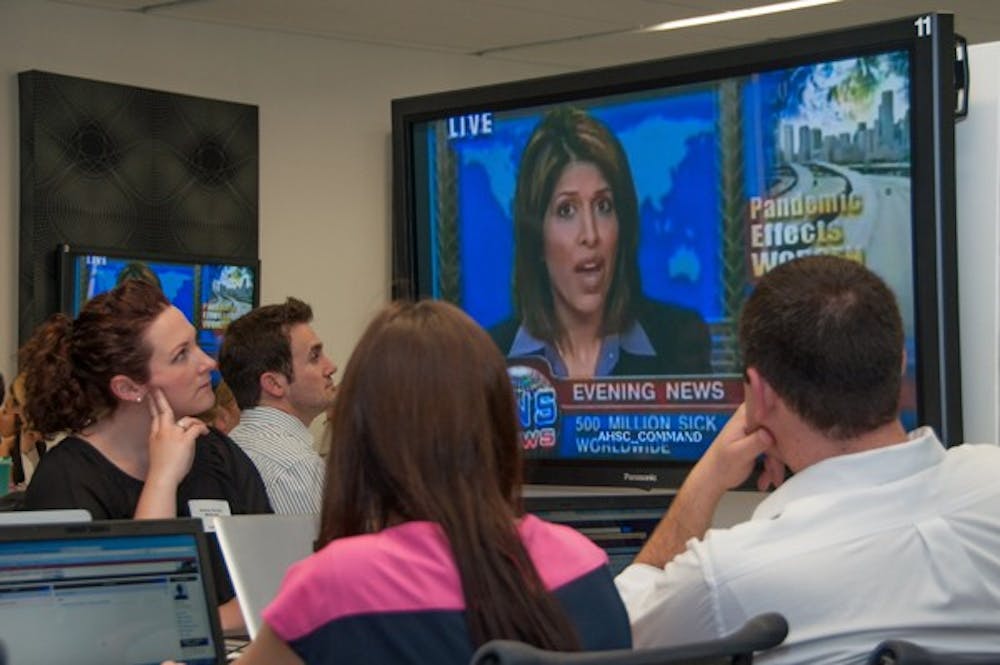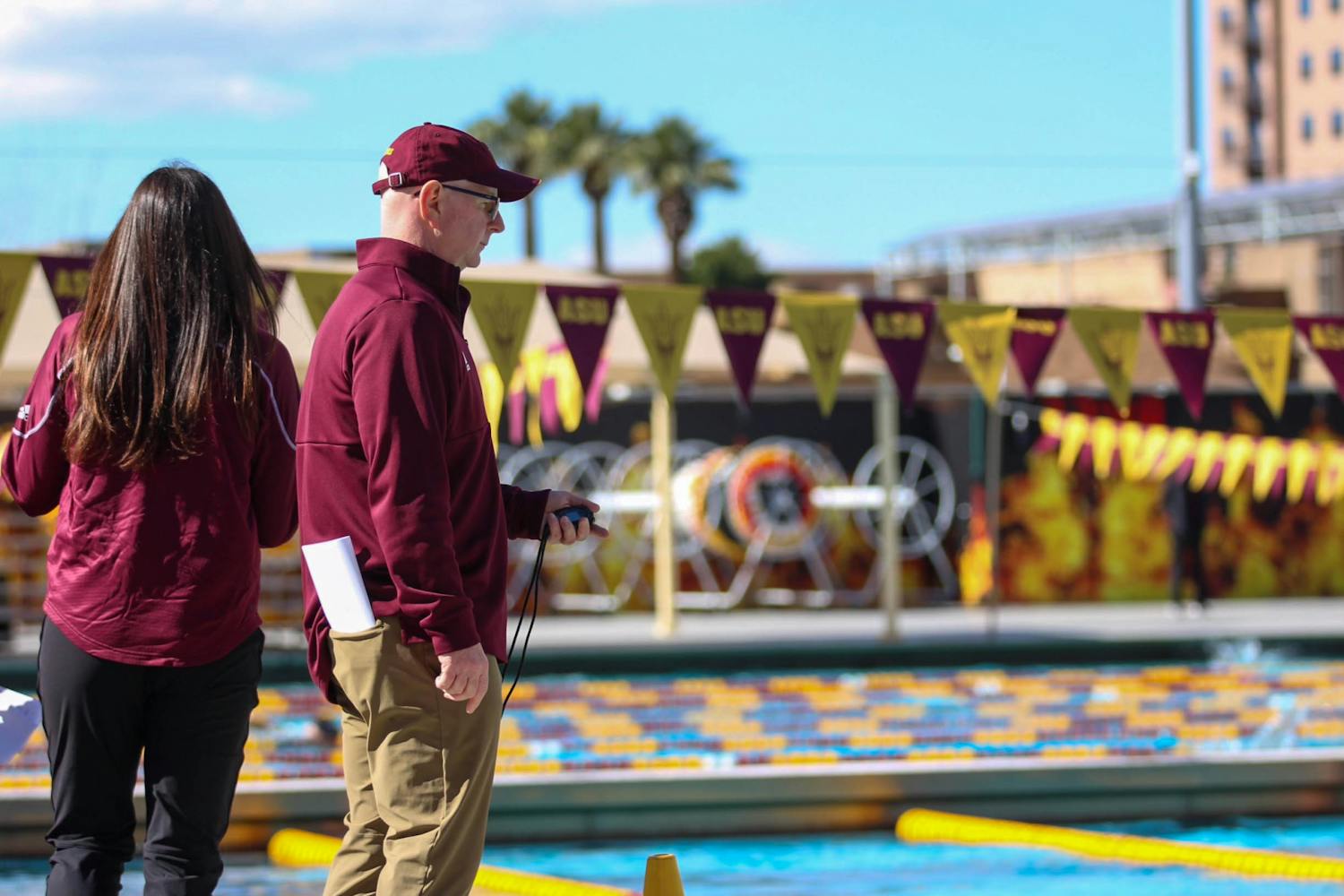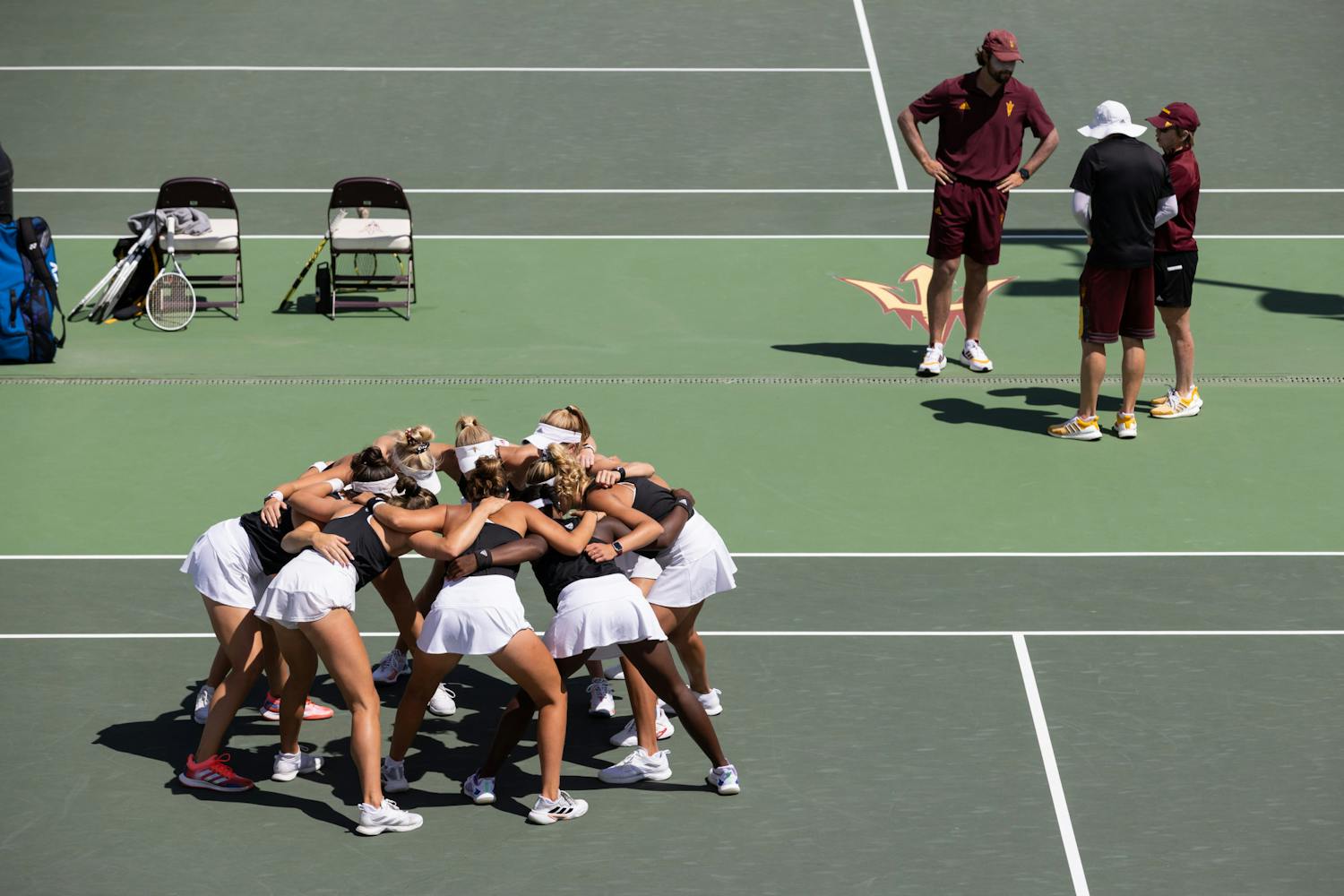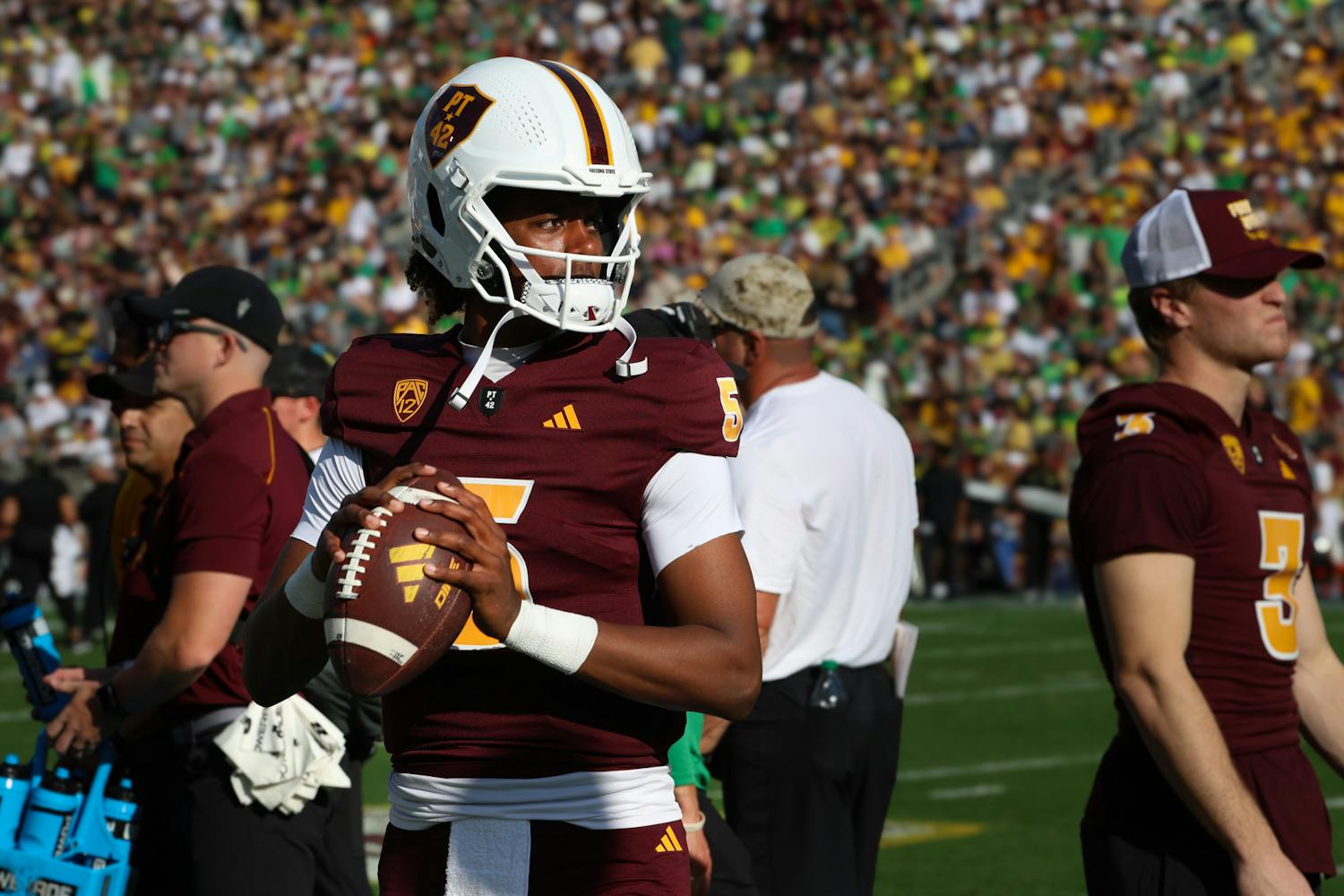 Students from UA, NAU and ASU participating in a statewide pandemic flu exercise on Tuesday at UA's Health Sciences Education building in downtown Phoenix watch a mock newscast describing the simulated flu outbreak in the drill. (Photo courtesy of Sun Czar Belous, UA College of Medicine – Phoenix)
Students from UA, NAU and ASU participating in a statewide pandemic flu exercise on Tuesday at UA's Health Sciences Education building in downtown Phoenix watch a mock newscast describing the simulated flu outbreak in the drill. (Photo courtesy of Sun Czar Belous, UA College of Medicine – Phoenix)Fake news reports discussed shortages of drugs and other resources, the disruption of supply chains, the global effects and the development of a vaccine.
All of this was part of a pandemic flu simulation for students of various Arizona colleges. At UA’s Health Sciences Education building in downtown Phoenix, video calls were broadcast from other participating locations such as Prescott, Tucson, Flagstaff, Bisbee, Yuma and Tuba City.
Dr. Michele Lundy, one of the UA faculty members behind the event, said the simulation consisted of three exercises.
First, students training to be doctors, nurses, physicians, social workers, pharmacists and law enforcement officers were divided into teams that advised hospital ethics committees on devising a policy for treating patients.
Second came a shortage of antiviral medication, where the same student teams decided who would and would not receive the medication.
The third dealt with the “duty to report” — with potential of infection so high, students answered what kept them invested despite the risk of the disease spreading to themselves and their family.
“There is no ‘right’ answer,” Lundy said.
The clinical associate professor of family and community medicine said there are only different answers based on different views.
“There might be no good answer, but as a team you must decide the best answer,” Lundy said.
UA Chief Medical Officer Dr. Andreas Theodorou manned the “command center” and gave students directions via video.
“This is a fictionalized event, but make no mistake, something like this can happen,” Theodorou said in his opening speech.
He said the questions asked would reflect real dilemmas in a real emergency, so students should take them seriously.
Former U.S. Surgeon General Dr. Richard Carmona made a video appearance at the event.
“This is an extraordinary experience,” Carmona said.
Students would someday be faced with emergencies on a regional, national and global level regardless of their major, he said.
Students need to be trained to work together now, he said, so they don’t struggle when faced with a real-life crisis.
“If we did not have multidisciplinary teams, we could not respond appropriately,” Carmona said. “No one person has all the information.”
ASU social work graduate student Colleen Storey called the event “an exercise in teamwork.”
“I’m hoping to get some experience,” Storey said.
She said she aims to represent individuals like the elderly, disabled and people who are discriminated against.
ASU social work graduate student Cynthia Van Kleeck said she wanted to train for disaster preparation.
Van Kleeck said the drill left her feeling prepared.
Reach the reporter at smande17@asu.edu




